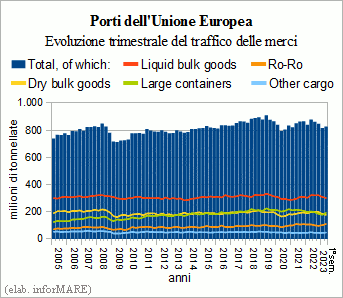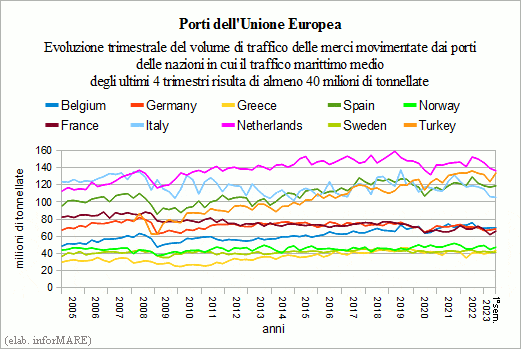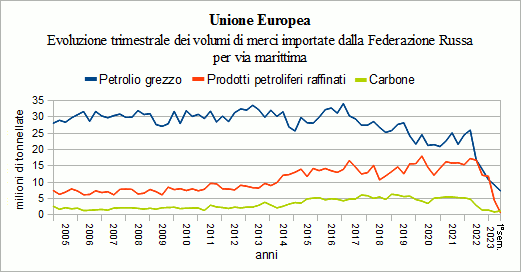
In the second quarter of 2023, cargo traffic in ports
of the European Union amounted to €827.7 million
tonnes, with a decrease of -5.9% over the same period
of the previous year, which was determined by the
Decrease in all cargo volumes in the main segments
with the exception of rolling stock where, with 109.7
million tonnes, traffic grew by +2.9%.
Eurostat announced today that in the period April-June of 2019, the
last year liquid and solid bulk, amounting to
301.3 million and 177.3 million tonnes, recorded declines
-6.8% and -10.6%. There is also a reduction in containerized goods with
191.9 million tonnes (-5.2%) and other goods
with 47.4 million tons (-3.3%).
 Total traffic at disembarkation in EU ports has increased
at 514.2 million tonnes (-6.2%) and that at loading
to 313.5 million tonnes (-5.4%).
Total traffic at disembarkation in EU ports has increased
at 514.2 million tonnes (-6.2%) and that at loading
to 313.5 million tonnes (-5.4%).
In the second quarter of 2023, domestic traffic alone was
amounted to 101.9 million tonnes (+9.0%). The
intra-EU international traffic, on the other hand, was 218.1
million tonnes (-4.7%) and international traffic outside the EU
by 463.4 million tonnes (-11.8%).
In the second quarter of last year, with 18.1 million
tonnes handled in EU ports, Russia was found to be
the eighth non-European trading partner by sea
of the European Union, while in the second quarter of 2021, before
of the start of the Russia-Ukraine war on February 24
In 2022, Russia was the top trading partner with 73.6 million
tonnes, as it was still in the first quarter of 2019.
2022 with 75.1 million tonnes.

